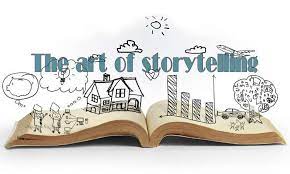Visual storytelling has emerged as one of the most effective and engaging ways to convey messages in today’s fast-paced, digital world. This art form combines compelling imagery with narrative techniques to create stories that resonate deeply with audiences. From advertising campaigns to social media posts and documentaries, visual storytelling has the power to evoke emotions, inspire action, and make complex ideas more accessible.
Understanding the Concept of Visual Storytelling

At its core, visual storytelling is the practice of using images, videos, graphics, and other visual elements to tell a story. Unlike traditional storytelling that relies heavily on words, visual storytelling leans on the principle that “a picture is worth a thousand words.” By integrating visuals with minimal or no text, it allows audiences to interpret and experience the narrative in a personal and immediate way.
Visual storytelling often employs elements such as color, composition, movement, and sound to enhance its impact. These components work together to guide the audience’s focus, highlight key aspects of the story, and evoke specific emotions.
The Role of Emotion in Visual Storytelling
One of the key strengths of visual storytelling lies in its ability to evoke emotion. Humans are naturally drawn to visuals that resonate on an emotional level, whether it’s joy, sadness, awe, or anger. For example, a photograph of a child’s laughter can convey happiness more powerfully than a written description.
Emotionally charged visual stories are not only memorable but also encourage viewers to share them with others. This emotional connection helps brands, organizations, and creators build stronger relationships with their audiences and foster trust.
Visual Storytelling Across Different Media
Visual storytelling is versatile and can be applied across various platforms and media types. Each medium offers unique opportunities for creativity and engagement.
Photography
Photography has long been a cornerstone of visual storytelling. A single image can encapsulate an entire story, capturing moments that words might struggle to describe. Photojournalists, for instance, rely on this medium to convey real-world events with impact and authenticity.
Film and Video
Video storytelling takes the concept further by incorporating movement, sound, and editing. Documentaries, short films, and even social media videos use cinematic techniques to immerse audiences in narratives. Platforms like YouTube and TikTok have amplified the reach of video storytelling, making it more accessible than ever.
Graphic Design and Illustration
Graphics and illustrations offer another dynamic avenue for storytelling. Infographics, for example, combine data with visuals to tell compelling stories. Comics and illustrated books bring narratives to life with characters, settings, and action sequences that engage readers of all ages.
Social Media
Social media has become a powerful space for visual storytelling. Platforms like Instagram, Pinterest, and Snapchat are designed around visual content, allowing creators to craft stories that are shareable and impactful. Short-form videos, carousels, and stories are just a few of the tools available to enhance storytelling on these platforms.
Elements of Effective Visual Storytelling

Creating impactful visual stories requires more than just beautiful images. It involves a careful combination of key elements that work together to convey the intended message.
Strong Narrative
Every visual story needs a clear and compelling narrative. Whether it’s a journey, a conflict, or a transformation, the narrative provides structure and meaning to the visuals.
High-Quality Imagery
The quality of visuals plays a critical role in storytelling. Blurry or poorly composed images can detract from the message, while sharp, vibrant visuals can captivate viewers and reinforce the story.
Consistent Style and Branding
For brands and organizations, consistency in style and branding is essential. A unified visual language ensures that the story aligns with the brand’s identity and values.
Relatable Characters
Including relatable characters in visual storytelling can make the narrative more engaging. Viewers are more likely to connect with a story when they see themselves reflected in its characters or themes.
Emotional Resonance
Stories that evoke emotion are more likely to leave a lasting impression. Whether it’s through the use of color, lighting, or subject matter, emotional resonance is a critical component of effective visual storytelling.
The Impact of Technology on Visual Storytelling
Advancements in technology have transformed visual storytelling, providing creators with innovative tools to enhance their narratives. From virtual reality to AI-generated visuals, these technologies are pushing the boundaries of what’s possible in storytelling.
Virtual Reality and Augmented Reality
Virtual reality (VR) and augmented reality (AR) offer immersive experiences that allow audiences to interact with stories in new and exciting ways. For example, VR can transport viewers to distant pwvip4d locations, while AR can overlay digital elements onto real-world environments.
Artificial Intelligence
AI is playing an increasingly significant role in visual storytelling. Tools like AI-generated art and automated video editing software make it easier for creators to produce high-quality visuals quickly and efficiently. AI also enables personalized storytelling experiences, tailoring content to individual audience members.
Social Media Algorithms
Social media algorithms prioritize engaging visual content, making it essential for creators to optimize their stories for these platforms. Understanding how algorithms work can help storytellers reach larger audiences and maximize their impact.
Challenges in Visual Storytelling

Despite its advantages, visual storytelling comes with its own set of challenges. Creators must navigate issues such as copyright, cultural sensitivity, and the risk of misinterpretation.
Copyright and Ethical Considerations
Using visuals without proper permissions can lead to copyright violations and legal consequences. Ethical storytelling requires sourcing visuals responsibly and giving credit to original creators.
Cultural Sensitivity
Visual storytelling often involves portraying diverse cultures, traditions, and values. Ensuring accuracy and sensitivity in these portrayals is critical to avoiding stereotypes or misrepresentation.
Misinterpretation
Because visuals are open to interpretation, there’s always a risk that audiences may misinterpret the intended message. Clear narratives and thoughtful design can help minimize this risk.
The Future of Visual Storytelling
As technology continues to evolve, the future of visual storytelling looks brighter than ever. Emerging trends like interactive storytelling, 360-degree videos, and AI-generated content are reshaping the way stories are told and experienced.
Interactive storytelling, for example, allows audiences to play an active role in the narrative, creating a more personalized and engaging experience. Meanwhile, advancements in AI are making it possible to generate highly realistic visuals that push the boundaries of creativity.
Conclusion
Visual storytelling is a powerful tool that transcends language and cultural barriers, making it an invaluable asset in today’s globalized world. By leveraging the power of visuals to evoke emotion, convey messages, and inspire action, creators can connect with audiences in meaningful and lasting ways. As technology continues to advance, the possibilities for visual storytelling are virtually limitless, promising an exciting future for this timeless art form.








